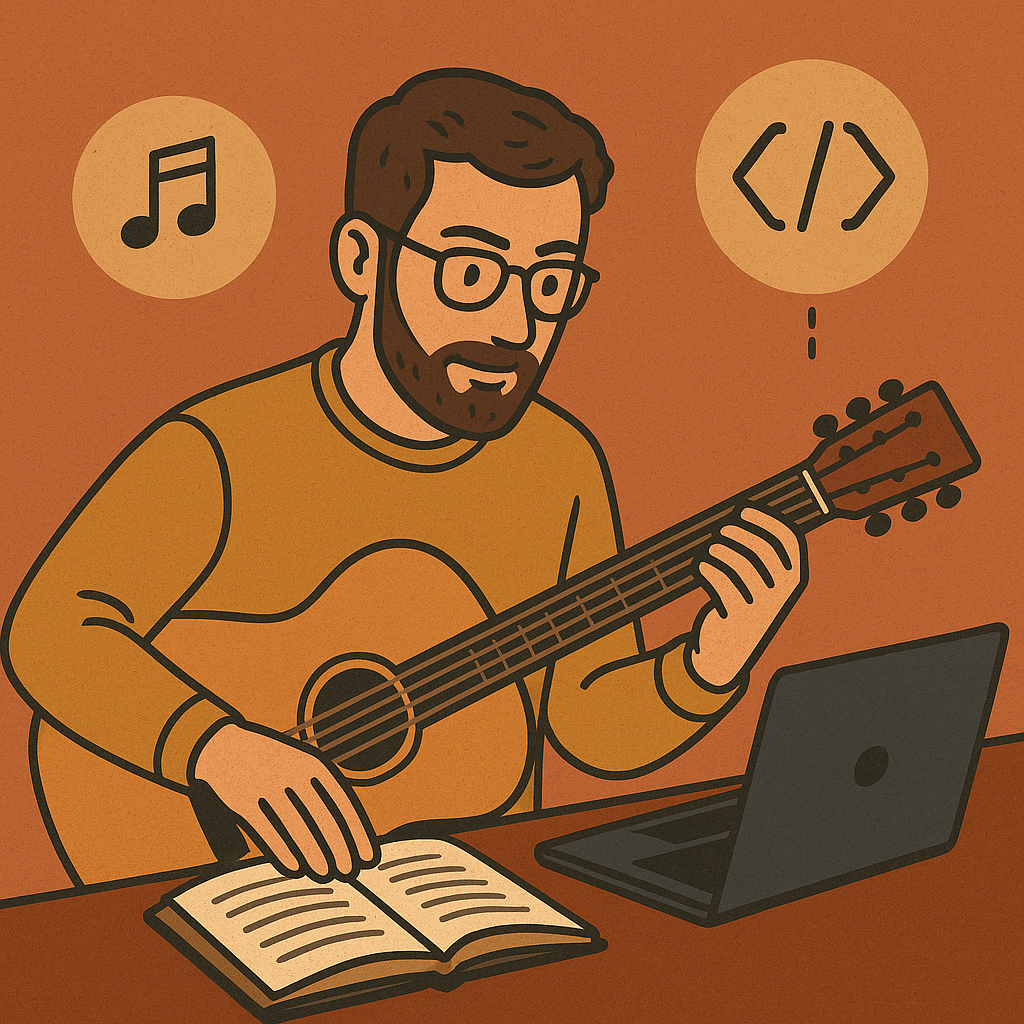There’s a unique kind of joy I feel when I dive into a new topic. I love the spark of curiosity, the planning phase, the excitement of figuring out how to approach something I know little about. From that initial idea to the moment I start learning, it all feels purposeful and energizing.
But that excitement often fades when the path forward isn’t so clear—especially when I fall into the trap of thinking I want to “learn how to do something” without really understanding what that means. Take learning to play guitar, for example. For years, I told myself I wanted to learn, but I had no clear idea of what that actually involved. I didn’t know where to start, what milestones to aim for, or how progress should even look. As a result, it was slow, frustrating, and not very rewarding.

The same thing happened when I first tried to learn how to code. I went from tutorial to tutorial, book to book—completing course after course—only to find myself right back at the beginning whenever I tried to start something from scratch. I knew about coding, but I didn’t know how to actually do it.
In both cases, the core problem was the same: I had the process backward. I focused on absorbing information before setting a clear goal I could work toward. Without a specific, realistic outcome in mind, I had no way of identifying the knowledge gaps that were holding me back. I was learning in theory, not in practice.
Of course, following a curriculum is helpful—but only if it’s tied to something you’re actively trying to build or do. We’re taught in school to follow structured lessons, progressing from topic to topic year after year. But in real life, there’s no natural rhythm or schedule pushing us to revisit what we’ve missed. And if we’re learning alone, it’s easy to get stuck without realizing what exactly we’re missing. Even worse, we end up with a shallow understanding that’s not enough to move forward, making the entire process feel heavier and more confusing.
But there’s hope. The idea is simple: stick to the basics and don’t jump ahead until you really grasp what the subject is about—and more importantly, what it means to you. If you want to learn guitar, don’t obsess over theory or complicated solos right away. Start with the basics: learn your chords, master some simple progressions, practice rhythm, and get comfortable reading tabs. Once those are second nature, you’ll be playing songs in no time—and progressing to more complex techniques won’t feel so overwhelming.
It’s the same with coding. Ask yourself: What do I want to build? Maybe it’s a simple app. Great—sketch it out, understand how it should function, and then find a course that teaches the basics you need. Learn about building blocks like variables, functions, and classes—and immediately apply them to your project. When you get stuck, you’ll clearly see what knowledge you’re missing, and you’ll know exactly what to search for.
The worst thing you can do is hop from tutorial to tutorial hoping to feel more prepared. That’s not learning—it’s just procrastination in disguise.
In the end, learning by doing means committing to action. Focus on the fundamentals. Document your gaps as they arise. Find the resources that help you fill them. Use tools like AI as your personal tutor—available anytime, ready to help you break through when you’re stuck.
This approach won’t just help you learn—it will help you build. And that’s what really matters.